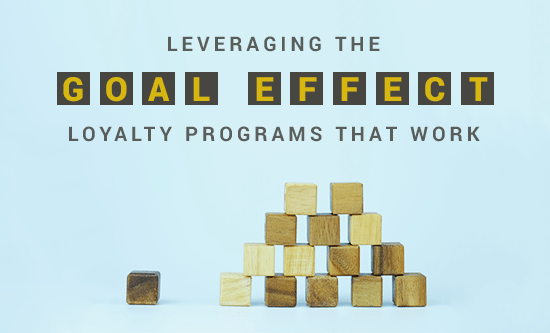While they’re not a new idea, loyalty programs are everywhere.
Whether you are using the services of a restaurant, coffee shop, airline, hotel, or even nail salon, you can bet your bottom dollar that they operate some sort of loyalty program. At Gloria Jean’s Coffee, for example, by swiping your e-sipper rewards card every time you purchase a skinny chai latte, you’ll be several points closer to reaching your goal of a complimentary beverage. For every seven hundred points accrued (or ten small drinks), a free small coffee is yours for the taking.
The use of goals to motivate individuals was summarised by Locke and Latham in their 1990 book ‘A Theory of Goal Setting & Task Performance’. Generally, when individuals have an extrinsic motivation to achieve a goal, e.g. for the purposes of being rewarded, they’ll exert greater effort in reaching that goal. For example, why be content with only having a Qantas Bronze Card, when a Gold Card offers so many more perks? Lounge access anyone?
In fact, numerous studies have shown that by incorporating ‘tiers’ into loyalty programs, businesses are often able to elicit two positive side effects from customers:
- Endowed progress effect – this occurs when people start to make progress towards an artificial goal. For example, progressing through various ‘stages’ of a flight booking will prompt the same yearning for completion, as will another stamp on your frequent sippers card at the local coffee shop.
- Gradient goal effect – as people get closer to their goals, a higher degree of effort will be given to reach that goal. For example, at almost every Olympic Games, the world witnesses at least one athlete who gets an amazing burst of energy to pass his/her competitors right at the finish line to win gold.
We all like to feel special
All human beings, regardless of our background or socio-economic status, like to feel important and unique when comparing ourselves to others. In response, many businesses tap into this innate human desire by creating hierarchical loyalty programs. I mean, who wouldn’t feel special waving around a Gold Starbucks Card during their next coffee purchase? Not only would you have access to enticing gold member rewards, but you would also be a member of an exclusive and ‘higher class’ of Starbucks customers – and have a shiny gold card to prove it!
Leveraging the ‘goal effect’
Successful loyalty programs are premised on customers trying to reach a number of goals. To capitalise on this ‘goal affect’, here a few simple tips:
- use tiers as much as possible to make goals easily identifiable;
- keep things simple so that customers don’t get confused;
- highlight people’s progress towards each tier level;
- use visual aids so people can track their progress;
- try to make customers feel valued and like they’re part of something exclusive;
- use social proof: make it easy for customers to share the success of reaching their goals.
In order to develop an effective loyalty program, businesses need to craft it in a way that offers enticing rewards, a path to improve one’s status, and a sense of achievement. Once all those elements are satisfied, your business will be well on the way to securing a solid and dependable customer base.
Want to know more on what it takes to build a successful loyalty program? Have a look at this case study from Rabbit Rewards, a loyalty program for the Bangkok Mass Transit System with more 3.5 million members.
 by Regan Yan, the CEO of Digital Alchemy.
by Regan Yan, the CEO of Digital Alchemy.
Regan is a subject-matter expert in analytical database marketing and customer relationship marketing, as well as an in-demand presenter and keynote speaker at national and international events. He also authors thought leadership pieces on data-driven marketing that can be found on the DA Blog.
[pardot-form id=”46577″ title=”Blog Sign up test1″]



